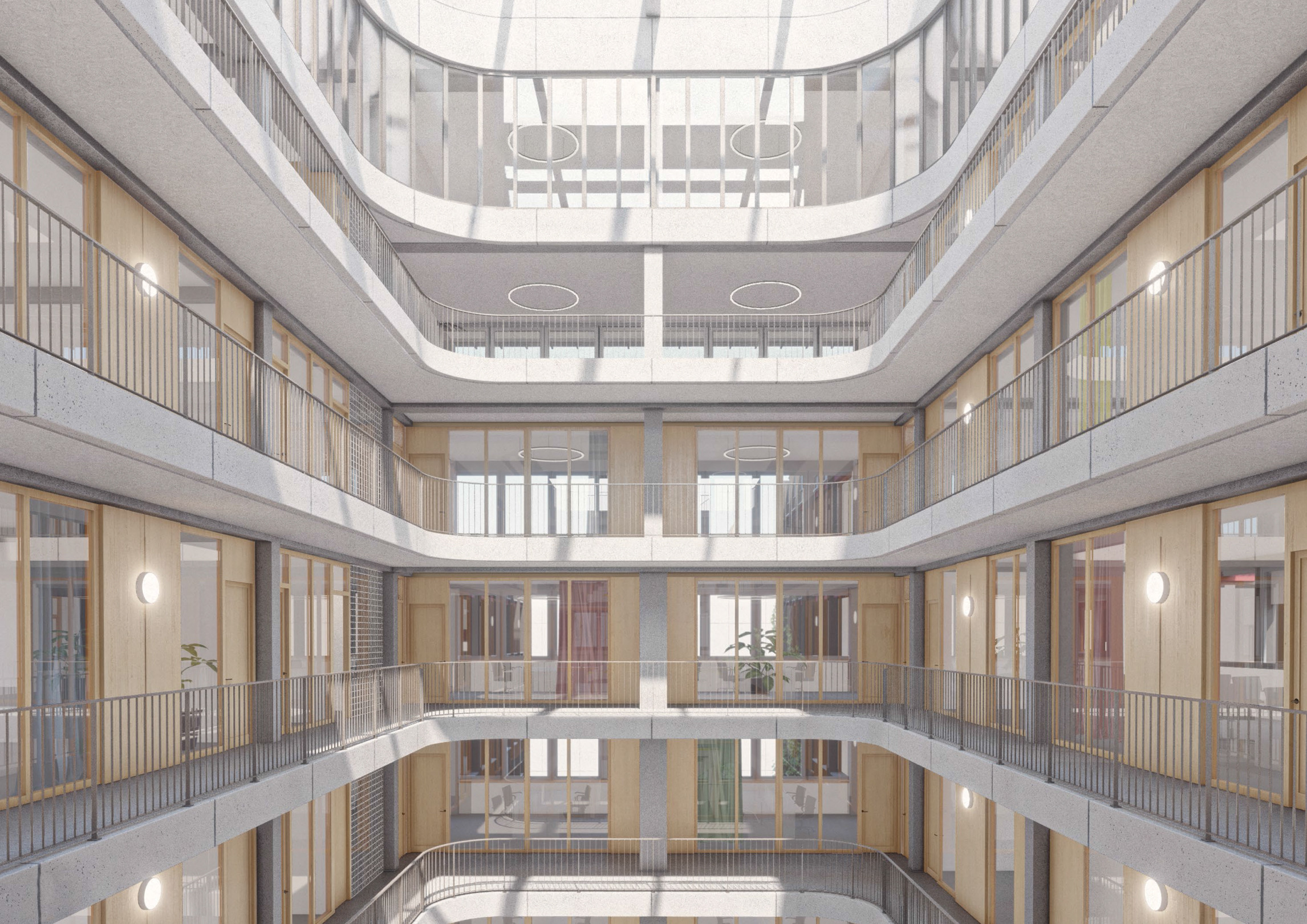Jakub Kender↓
Gallery
Studies
| 2019–2022 | Architecture, AVU (Miroslav Šik) |
| 2018–2021 | Fakulta architektury, ČVUT |
About the work
Living Together Alone Adaptation of the Mercuria Administrative Building to a Shared Housing
The subject of my diploma work is the adaptation of a 1960s’ administrative object. The architecture of the given period has usually been associated with the political regime of, what was then, Czechoslovakia, and large part of society therefore views it in an immensely negative way. However, Prague buildings following the lines of Brutalism have fundamentally shaped the image of the city, and came to represent a significant layer of the local architecture. Mercuria is to be demolished in the near future and replaced by an office building. The scarce information about the planned new house suggests that it probably will be a typical “generic office construction” that will fill with employees in the morning and turn into a dark, empty place in the evening.
My diploma project seeks to offer an alternative to the complete demolition of Mercuria. During the semester, I was looking for a way to partially preserve it and at the same time breathe new life into it by transforming its function, which would positively influence the entire city district. By adapting Mercuria to a hybrid that fuses housing, work, and services, I try to create a functional organism that has the potential for all-day use. The ground floor of the building offers spaces for services, a café, a multifunctional hall, and an entrance to a co-working center located on the first floor. The upper floors are designed for shared housing for people who prefer the intimacy of a separate housing unit with basic sanitary equipment, but also want to share their leisure or working time with other residents. Despite the minimum size of the housing units, the house provides opportunities to form a large community.
This typology of housing is not only suitable for students or young people, but also offers opportunities for collective housing for other social categories of singles, career-oriented people or groups of seniors. Shared living areas with kitchens or a shared laundry room encourage the development of a community and social interactions between the inhabitants. The upper floors of the protruding towers offer a typology of apartments for small young families, or larger, more luxurious apartments on the highest floors. The concentration of energy in the form of various social strata and their interaction can expand and enhance the diversity of a community inhabiting the given site. The wide functional content of Mercuria can thus have the potential to provide the site with much more than just another office building.

